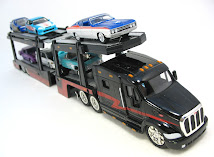 Mr Ratan Tata won the hearts of millions among his Nano car priced at about Rs 1 lakh only, the cheapest car in the world, but has he won their pockets as well?
Mr Ratan Tata won the hearts of millions among his Nano car priced at about Rs 1 lakh only, the cheapest car in the world, but has he won their pockets as well?Price pays an extremely large part in the perception of such goods. As disposable incomes rise and cars enter more households, a high-quality product like the Nano may turn out be less preferred over another similar, small car which is inferior in quality but more expensive.
We have to wait until the main plant in Sanand goes into full production in April and starts producing up to 2.5 lakh units yearly. The existing capacity at Pantnagar is 50,000 units. There are other problems, also, like the risk of waning customer confidence after a few Nanos caught fire right after being delivered. Could the cheap price fuel qualms of poor quality?
After the 1 lakh pre-launch reserving in April last year, the launch in March and deliveries starting July, Tata Motors has been able to deliver just 25,640 units in the seven months till February 2010. With low scales of production due to capacity distribution at the Tata Ace plant, the numbers are way too miserable for the volume-driven product to be profitable.
Even with so many unfavorable conditions, Mr Tata has persistently maintained his promised price tag — at least for the first one lakh deliveries. But what if he had set a superior initial base price of about Rs 1.4 lakh?
The 40 per cent price ramble would still render the car at least Rs 50,000 cheaper than Maruti's and rest of the industry's entry product — the Maruti 800.
Besides, with predictable sales of about one lakh units in a year at that price, Tata Motors would make Rs 400 crore more. In the small car segment — the largest car segment in the country — a cost difference of Rs 50,000 is frequently a deciding factor for purchases.
It may then appear as an attractive choice in the entry-level car market, rival with other models such as the Maruti 800, Alto and A-Star, the Chevrolet Spark and the Hyundai Santro, although at a very competitive price point.
For More Information On US Recent Aviation Accident Please Visit This Site: Car Shipping

0 comments:
Post a Comment